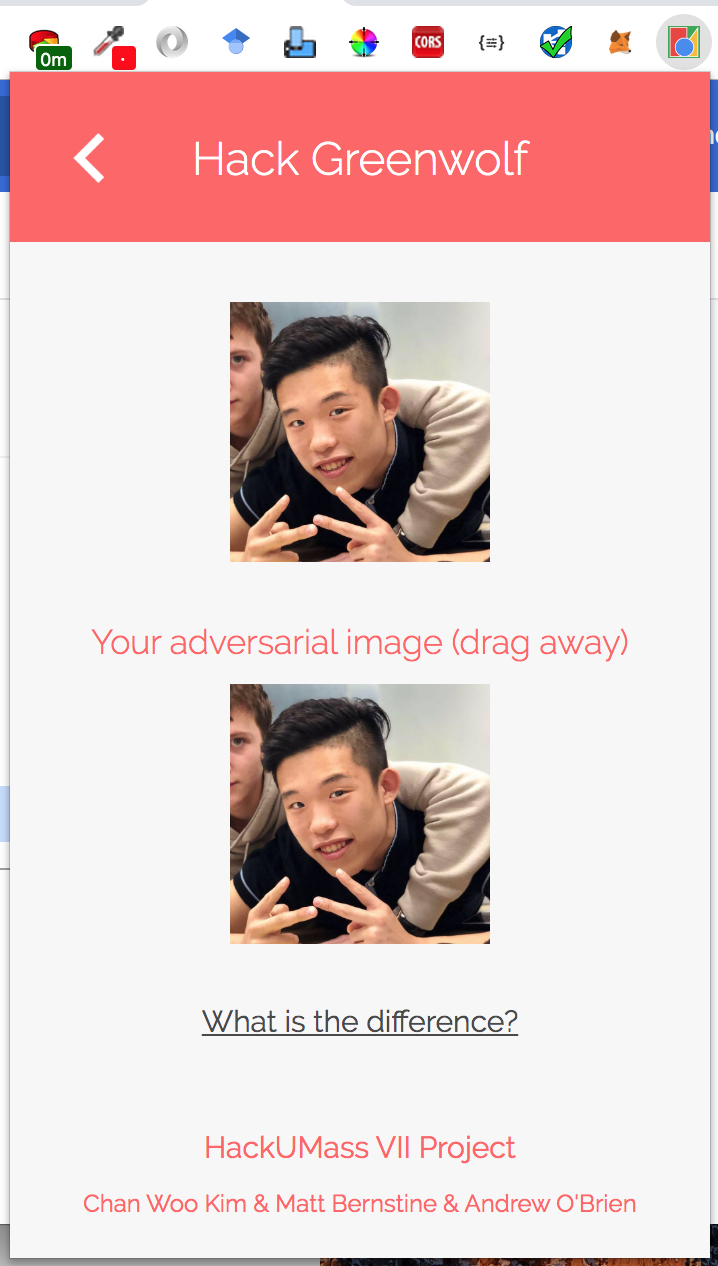Aneuralnymous

Description as a Tweet:
Facial recognition blocker using adversarial examples. Drag and drop your selfies into it before you upload them to protect your privacy!
Inspiration:
We wanted to build a web app using ML because it combines all of our backgrounds. We were interested in adversarial examples and had never done anything with them before, and liked the idea of making it easier for people to protect their privacy.
What it does:
nothing at the moment
How we built it:
with lots of backtracking
Technologies we used:
- HTML/CSS
- Javascript
- C/C++/C#
- Python
- AI/Machine Learning
Challenges we ran into:
It took literally over a day to port a pretrained ResNet-variant from a C++ library to Keras (all that spaghetti code got to stay out of our repo, you're welcome!)
Scope is inherently limited by which face trackers have published their models for us to get our greedy hands on
Accomplishments we're proud of:
Handling a bunch of frameworks simultaneously, solid idea inspired by engineers we talked to on the first night, trying something ambitious, well-considered and really polished UI in the Chrome extension
What we've learned:
trying to get behind a C++ API and digging into the source for methods we're not supposed to be able to use is a world of pain
What's next:
get ART to actually work :(
Figure out how to make the TF environment persist on the server so you don't have to load the model all the way from an .h5 for every image, should get us a big speedup
Built with:
coffee
Prizes we're going for:
No Prizes Chosen
